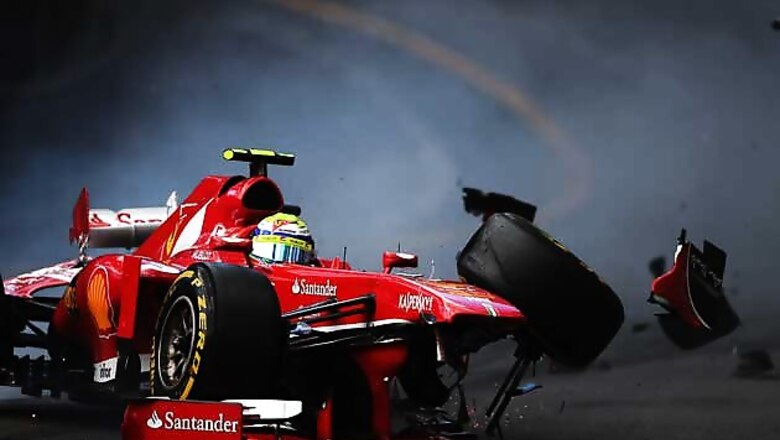
views
Silverstone: Along with new engines, the 2014 F1 season will have plenty of other changes including a penalty point system for drivers and expanded testing to be allowed, the World Motor Sports Council announced on Friday. The penalty system is being introduced following a string of crashes involving young drivers in the past year, including Lotus' Romain Grosjean and Williams' Pastor Maldonado.
A reckless driver can already be sanctioned -Grosjean was banned for one race last year - but the new system aims to provide more clarity for the teams. It would allow a driver to accumulate 12 points before he is banned from the next race. The council said the penalty points would depend on the "severity of the offense" and remains on the driver's record for 12 months. Teams said such a system was needed, but that it could pose a distraction to a driver facing possible sanctions.
"Potentially you can imagine being in a situation as a driver or as a team with a driver who is close to being prohibited," McLaren's Team Principal Martin Whitmarsh said. "I think that could be uncomfortable but we'll have to see how that develops." Red Bull's Christian Horner agreed.
"I must admit I'm not a massive fan of the points system," he said. "I don't like the thought of points carrying from one season into the next and that sort of lingering over the driver. In our position, we would have preferred penalties within a season to be dealt with within a year but that's the way it is." The World Sporting Council also announced plans to allow preseason testing in January, which raises the prospect that Abu Dhabi or Bahrain could host them. It also would allow four two-day track sessions during the season - replacing eight, one-day promotional days and three-day, young driver tests.
Those tests would be held in Europe on the Tuesday and Wednesday after each race to "ensure minimal additional resources are necessary." In-season testing was banned in 2009 because of concerns over the high costs, especially among the smaller teams. Horner said the testing changes "make sense," adding that the 2014 testing "may be slightly more expensive but it gives the opportunity for young drivers and test drivers to actually run at those events as well as your race drivers."
The World Motor Sports Council also said the Concord Agreement - which among other things determines revenue sharing among the teams - had still not been finalized between the FIA and Bernie Ecclestone's Formula One Group. That leaves 10 teams depending on bilateral agreements which vary from paddock to paddock. The 11th team, Marussia, doesn't have an agreement.
"It would be good for the sport to get the matter behind us," said Whitmarsh, who also heads the Formula One Teams Association. "We have a degree of uncertainty in the sport. We have a lack of clarity over the governance process," he said. "If a challenging or fractious issue arises, it could go wrong without having that governance process defined. That's a danger."
Other changes approved by the World Motor Sports Council, the rule-making body of the International Automobile Federation (FIA), included allowing Mercedes to supply engines to a maximum of four teams in 2014. There are other rule changes for drivers, as well. Gear boxes can be used for six rather than five races, no more than 100 kilograms of fuel can be used for one race and pit lane speeds have been set at 80 kilometers per hour in practice and qualifying. Currently, the speed limit is 60 kph in practice and 100 kph for qualifying.




















Comments
0 comment